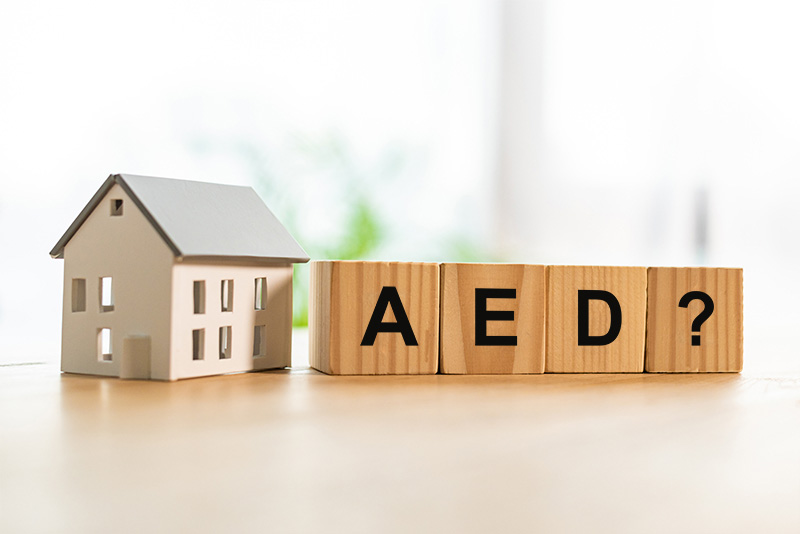Reasons To Have an AED at Home
September 29, 2021

It is crucial that AEDs are everywhere! We see them in
schools, at
airports, in
fitness centers, and more. One place we don’t see a lot of AEDs is in the home. Should people have an AED at home? Let’s look at some reasons why it could be crucial to have an
AED at home.
According to the
American Heart Association 70% of sudden cardiac arrest happens at home. When someone suffers sudden cardiac arrest, survival rates can be high if CPR is started immediately and an AED is used quickly.
Statistically, when an AED is used within one minute after someone suffers
sudden cardiac arrest, they have a 90% chance of survival. Each minute after without defibrillation, drops the person’s chances of survival 10%. Survival rates are the highest when an AED is used within 3 minutes.
Across the United States, the EMS response time is an average of 7 minutes. That means it is crucial CPR is started and an AED is used BEFORE the ambulance arrives.
Based on these statistics, it is beneficial to have an AED at home. The quicker it can be used, the better. Let’s look at what to do if you are home and someone suffers sudden cardiac arrest.
Scenario 1: You have an AED at home.
Step 1: Call 9-1-1
It is always important to call 9-1-1. Listen to the dispatcher and make sure to tell them that someone is unresponsive and not breathing. It is crucial that the EMTs know that they are coming to treat someone in sudden cardiac arrest. Put the phone on speaker mode so you can use the AED and provide CPR while talking to the dispatcher.
Step 2: Grab the AED and turn it on
If you have an AED at home, go grab it, and use it right away. Turn it on and listen to the step-by-step instructions it is giving you. You can provide CPR to the beat of the metronome following the first shock. After two minutes, the AED will analyze again and determine if another shock is needed.
Step 3: Continue to listen to the AED
Listen to the AED and provide CPR when told until the ambulance arrives.
Scenario 2: You DO NOT have an AED at home.
Step 1: Call 9-1-1
It is always important to call 9-1-1. Listen to the dispatcher and make sure to tell them that someone is unresponsive and not breathing. It is important that the EMTs know that they are coming to treat someone in sudden cardiac arrest. Put the phone on speaker mode so you can provide CPR while talking to the dispatcher.
Step 2: Provide CPR
While talking to the dispatcher, start providing
chest compressions immediately. If you are comfortable, you can provide breaths but it is not necessary. Continue providing CPR until the ambulance arrives.
The job of the lay rescuer is to do anything they can until the ambulance arrives. If an AED is available that means
providing CPR and using an AED. If there is no AED available, it means providing CPR until an ambulance arrives or until an AED comes to the scene.
To learn more about Defibtech and to join us on our quest to
save lives from sudden cardiac arrest, visit
www.Defibtech.com.
Sources:
https://cpr.heart.org/en/resources/cpr-facts-and-stats#:~:text=The%20location%20of%20Out%20of,out%20of%20hospital%20cardiac%20arrest.
